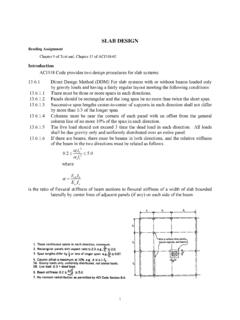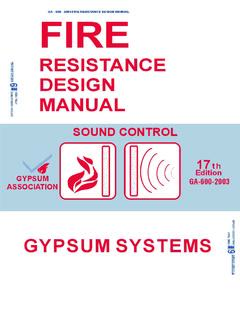Transcription of Lighting Design Guide - Eaton
1 00 Lighting Design GuideMains LightingLighting Design Guide Mains LightingMains Lighting Design Design GUIDE200 Lighting Design GuideMains LightingHuddersfield Leisure Design GUIDE300 Lighting Design GuideContentsMains Lighting Design Guide 4 Lighting Design 4 Uniformity and Rations of Illuminance 4 Glare 4 Colour and Room Reflectance 4 Energy Efficiency 4 Special Considerations 4 Lumen Method Calculations 5 Polar Intensity Curves 6 Utilisation Factors Chart 6 Illuminance Cone Diagrams 6 Cartesian Diagrams 7 Isolux Diagram 7 interior Lighting Design Guide 8 Wall and Ceiling Illuminance 8 Certificate of
2 Conformity 9 Luminous Environment 10 Luminance Distribution 10 Illuminance 10 Glare 12 Lighting in the interior Space 12 Colour Appearance and Colour Rendering 12 Flicker and Stroboscopic Effects 12 Additional Benefits of Daylight 13 Variability of Light 13 Practical Scheme Design 13 Lighting Design Software 16 Building Regulations Design GUIDE400 Lighting Design GuideMains LightingLighting DesignDesigning a basic Lighting scheme requires the consideration of many factors, not just the achievement of a desired Lighting level.
3 Basic objectives must first be established, such as: What sort of tasks will be performed in the area? What mood needs to be created? What type of Lighting will create a comfortable environment?There are also standards and legislation that need to be complied with. For example: How energy efficient must the Lighting be? How will Building Regulations affect the Design ? Is emergency Lighting required?When all of these objectives and requirements have been established, they can be expressed as a series of Lighting criteria in order to facilitate a quality Lighting Design . Criteria that would normally be considered are: Level of IlluminationIllumination levels for a wide variety of environments and tasks can be found in BS EN 12464-1: 2011 and the society of light and Lighting s code for Lighting .
4 The levels stated are maintained illuminance, which is the minimum average illumination level that should be achieved at the point of scheduled maintenance. Uniformity and Ratios of IlluminanceThe combination of luminaires selected should evenly illuminate the working plane and appropriately illuminate walls and ceilings in relation to the task illumination, so that a pleasant and comfortable environment is achieved. In specific areas, increased directional Lighting may be required to create a defined or more intimate environment. GlareThe acceptable level of glare should be established as appropriate for the application, using information in BS EN 12464-1: 2011 and the SLL code for Lighting . Colour and Room ReflectanceThe colour appearance of the lamps should be chosen for the application and complement the interior colour scheme, which should be chosen with an appreciation of the reflectance values that will be achieved.
5 Lamps should be selected with appropriate colour rendition properties as detailed in EN12464-1 and for colour discrimination and reduction of eye fatigue. Energy EfficiencyLuminaires should be selected that meet the requirements of the Building Regulations Part L. The distribution characteristics should also match the requirements of the criteria above. Special ConsiderationsCertain applications require additional considerations, such as the addition of display Lighting , the arduous nature of the environment or the use of Display Screen Equipment. Luminaires should be selected and the Design completed with these elements in mind, where appropriate. After these criteria have all been considered, a Lighting scheme calculation can be undertaken.
6 The most popular method of establishing the quantity of luminaires required, the illumination level achieved and the luminaire layout, is to use computer software created specifically for Lighting Design . It is important to Design GUIDE500 Lighting Design GuideMains Lightingremember that all the criteria above must still be considered prior to using computer software, if a satisfactory scheme is to be Design can also be achieved using published photometric data, such as that included on the product pages of this catalogue. Average illumination via the lumen method of calculation can provide fast results that can then be assessed and facilitate more detailed Design of the most appropriate option if Method CalculationsThis method uses the utilisation factor tables created from photometric measurement of each luminaire.
7 Firstly, the Room Index (K) of the space must be calculated, which is the relationship and measure of the proportions of the room:K = L x W (L + W) x HmThe result is used in conjunction with room reflectance values to obtain a specific utilisation factor for the surface illuminated from the can then be used as part of the calculation to determine the average illuminance level, using the following formula:E = F x n x N x MF x UF AThe maintenance factor is a multiple of factors and is determined as follows:MF = LLMF x LSF x LMF x RSMFW here:LLMF = lamp lumen maintenance factor - the reduction in lumen output after specific burning hoursLSF = lamp survival factor - the percentage of lamp failures after specific burning hoursLMF = luminaire maintenance factor - the reduction in light output due to dirt deposited on or in the luminaireRSMF= room surface maintenance factor - the reduction in reflectance due to dirt deposition in the room surfacesGuidance on calculating each of these factors is provided in the SLL code for Lighting .
8 Alternatively, contact our technical support and application department for , the luminaires must be spaced in the room such that acceptable uniformity is achieved. The maximum spacing to height ratio, SHRmax, provides the maximum spacing permissible between luminaires in both transverse and axial directions, in comparison to the mounting height and should not be exceeded if acceptable uniformity is to be :L = length of roomW = width of roomHm = height of luminaire above working planeWhere:E = average illuminanceF = initial lamp lumensn = number of lamps in each luminaireN = number of luminairesMF = maintenance factorUF = utilisation factorA = Design GUIDE600 Lighting Design GuideMains LightingUsing Photometric DataThis catalogue includes a number of different formats of photometric data, to assist in Lighting Intensity CurvesThis illustrates the distribution of luminous intensity, in cd/1000 lm, for the transverse (solid line) and axial (dashed line) planes of the luminaire.
9 The curve provides a visual Guide to the type of distribution expected from the luminaire, wide, narrow, direct, indirect etc, in addition to intensity. Utilisation factors show the proportion of the luminous flux from the lamp that reaches the working plan. This is for the specific luminaire and allows for surface reflectivity and Room Index. The UF is used in average lumen calculations to calculate the average illumination level for an area with a specific Cone DiagramsUsually used for spotlights or lamps with reflectors, the diagram indicates the maximum illuminance, E lux, at different distances, plus the beam angle of the lamp over which the luminous intensity drops to 50%. The beam diameter at 50% peak intensity, relative to distance away, is also 90 30 30 60 90 120 120 100 200 300 cd/1000lmLOR: : : nom: max: No.
10 LCTL414 ZUtilisation factors / TM5 Reflectances Room Index C W F 70 50 20 N/A 66 72 76 81 85 87 90 92 70 30 20 N/A 60 66 71 77 81 84 87 90 70 10 20 N/A 56 62 67 73 78 81 85 88 50 50 20 N/A 64 70 73 79 82 84 87 89 50 30 20 N/A 59 65 69 75 78 81 84 86 50 10 20 N/A 56 61 66 72 76 78 82 85 30 50 20 N/A 63 68 71 76 79 81 83 85 30 30 20 N/A 58 64 68 73 76 78 82 83 30 10 20 N/A 55 61 65 70 74 76 80 82 0 0 0 N/A 53 58 62 67 71 73 76 78 BZ-class 1 2 2 2 2 2 3 3 3 Design GUIDE700 Lighting Design GuideMains LightingCartesian DiagramsGenerally used for floodlights, this indicates the distribution of luminous intensity, in cd/1000 lm, for the horizontal (solid line) and vertical (dashed line) planes of the luminaire.

















